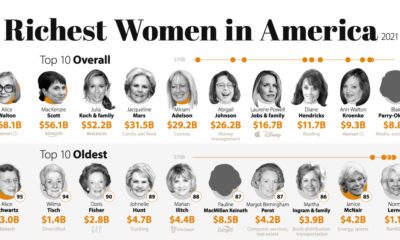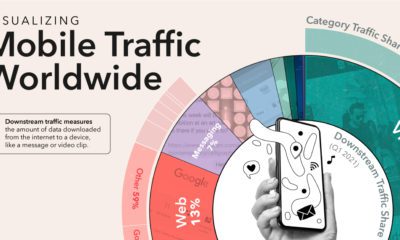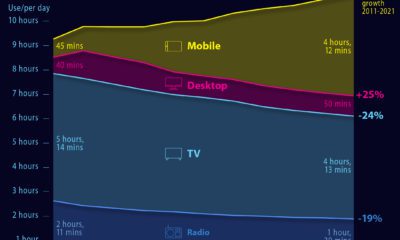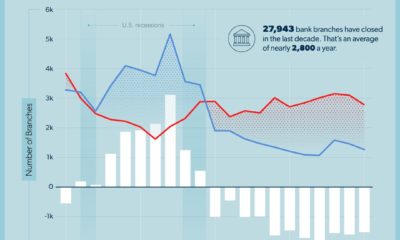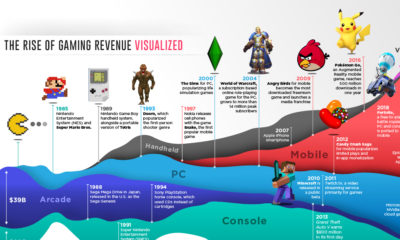Not surprisingly, businesses like customer rewards programs as well – they can be a way to drive loyalty, get repeat business, and ultimately increase customer retention. But there’s one problem: creating a quality loyalty program has been traditionally quite expensive, especially for brick-and-mortar businesses. After all, most companies do not have the clout to market a proprietary rewards app like Starbucks, so how can customer rewards be tackled more cost effectively in the digital era?
Introducing Card Linked Offers
Today’s infographic comes from Mobi724 and it explains the concept of card linked offers (CLOs), as well as the benefits they confer to consumers, retailers, and even payment processors.
As brick-and-mortar businesses look to the potential of the smartphone economy to help retain customers and increase store traffic, card linked offers (CLOs) present an interesting opportunity. Card linked offers are relevant, personalized, and easy to redeem. Further, they ultimately create a flawless and convenient experience that can help increase brand loyalty and customer satisfaction.
How Card Linked Offers Work
Card-linked offers (CLOs) are a card-linking technology enabling operators to link a special offer or coupon to a consumer’s debit or credit card. Combined with the effective use of proximity marketing, CLOs can help reach customers at the right place and at the right time. In return, operators see an increase card usage and spending at participating stores, while creating a unique opportunity to actively engage customers.
A Booming Market
In recent years, CLOs have become one of the most widely used online-to-offline (O2O) technologies. Card linked offers are already a multi-billion dollar market, and a recent industry survey found that transactions are growing at a rapid pace. Impressively, 62% of CLO users that responded to the survey saw their transactions increase by 100% or more in the last year. What else is driving growth in this expanding market?
- A Shift to Cashless The world is embracing a cashless economy, as the popularity and convenience of using cards and mobile payment apps increases. CLOs are poised to benefit from more cashless retail transactions, which are growing at 20% per year.
- Changing Consumer Behavior Research shows that having an immediately gratifying rewards experience is more important to consumers than the monetary savings they get in the process. This creates a positive feedback loop with every experience.
Gauging Success
Truly successful card-linked offers must reach consumers where they are, provide personalized offers, and enable O2O – an online-to-offline redemption experience – for the customer. If used correctly, card-linked offers can transform massive cost burdens and a lack of efficiency into new incremental revenue streams, providing a seamless user experience for all parties.
on But fast forward to the end of last week, and SVB was shuttered by regulators after a panic-induced bank run. So, how exactly did this happen? We dig in below.
Road to a Bank Run
SVB and its customers generally thrived during the low interest rate era, but as rates rose, SVB found itself more exposed to risk than a typical bank. Even so, at the end of 2022, the bank’s balance sheet showed no cause for alarm.
As well, the bank was viewed positively in a number of places. Most Wall Street analyst ratings were overwhelmingly positive on the bank’s stock, and Forbes had just added the bank to its Financial All-Stars list. Outward signs of trouble emerged on Wednesday, March 8th, when SVB surprised investors with news that the bank needed to raise more than $2 billion to shore up its balance sheet. The reaction from prominent venture capitalists was not positive, with Coatue Management, Union Square Ventures, and Peter Thiel’s Founders Fund moving to limit exposure to the 40-year-old bank. The influence of these firms is believed to have added fuel to the fire, and a bank run ensued. Also influencing decision making was the fact that SVB had the highest percentage of uninsured domestic deposits of all big banks. These totaled nearly $152 billion, or about 97% of all deposits. By the end of the day, customers had tried to withdraw $42 billion in deposits.
What Triggered the SVB Collapse?
While the collapse of SVB took place over the course of 44 hours, its roots trace back to the early pandemic years. In 2021, U.S. venture capital-backed companies raised a record $330 billion—double the amount seen in 2020. At the time, interest rates were at rock-bottom levels to help buoy the economy. Matt Levine sums up the situation well: “When interest rates are low everywhere, a dollar in 20 years is about as good as a dollar today, so a startup whose business model is “we will lose money for a decade building artificial intelligence, and then rake in lots of money in the far future” sounds pretty good. When interest rates are higher, a dollar today is better than a dollar tomorrow, so investors want cash flows. When interest rates were low for a long time, and suddenly become high, all the money that was rushing to your customers is suddenly cut off.” Source: Pitchbook Why is this important? During this time, SVB received billions of dollars from these venture-backed clients. In one year alone, their deposits increased 100%. They took these funds and invested them in longer-term bonds. As a result, this created a dangerous trap as the company expected rates would remain low. During this time, SVB invested in bonds at the top of the market. As interest rates rose higher and bond prices declined, SVB started taking major losses on their long-term bond holdings.
Losses Fueling a Liquidity Crunch
When SVB reported its fourth quarter results in early 2023, Moody’s Investor Service, a credit rating agency took notice. In early March, it said that SVB was at high risk for a downgrade due to its significant unrealized losses. In response, SVB looked to sell $2 billion of its investments at a loss to help boost liquidity for its struggling balance sheet. Soon, more hedge funds and venture investors realized SVB could be on thin ice. Depositors withdrew funds in droves, spurring a liquidity squeeze and prompting California regulators and the FDIC to step in and shut down the bank.
What Happens Now?
While much of SVB’s activity was focused on the tech sector, the bank’s shocking collapse has rattled a financial sector that is already on edge.
The four biggest U.S. banks lost a combined $52 billion the day before the SVB collapse. On Friday, other banking stocks saw double-digit drops, including Signature Bank (-23%), First Republic (-15%), and Silvergate Capital (-11%).
Source: Morningstar Direct. *Represents March 9 data, trading halted on March 10.
When the dust settles, it’s hard to predict the ripple effects that will emerge from this dramatic event. For investors, the Secretary of the Treasury Janet Yellen announced confidence in the banking system remaining resilient, noting that regulators have the proper tools in response to the issue.
But others have seen trouble brewing as far back as 2020 (or earlier) when commercial banking assets were skyrocketing and banks were buying bonds when rates were low.



